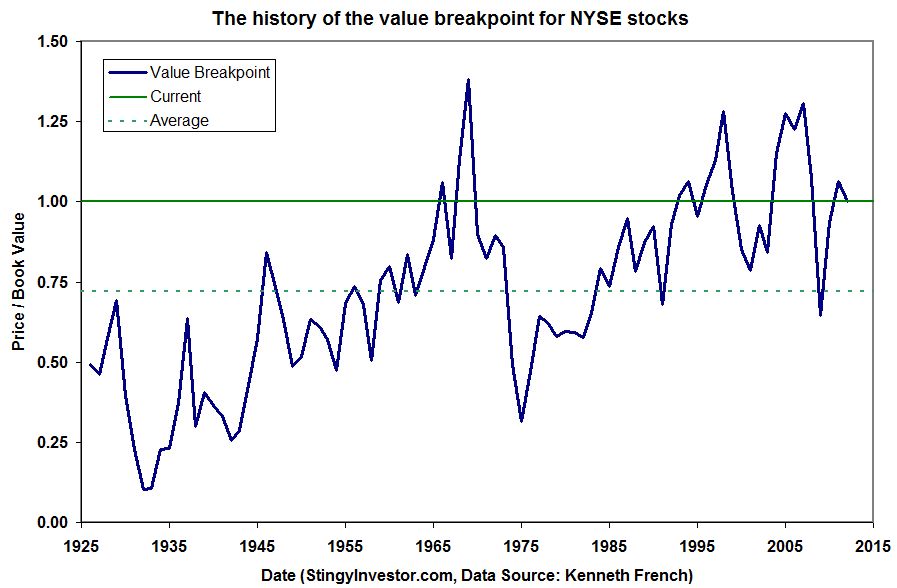Tale of the tape says even value stocks are expensive
We can debate endlessly whether stock markets will soar or shrivel in
2012. But as a value investor I'm much more interested in a different
question. I want to know if value stocks are sufficiently cheap to
satisfy my inner miser.
One way to answer that question is by turning to the work of Dartmouth
Professor Kenneth French, who publishes data on U.S. stocks that goes
back to 1926. He uses price-to-book-value ratios (P/B) as a predictor
of a stock's future success.
In one study, he sorted stocks by P/B, split the market into fifths,
tracked the performance of the five groups for a year, and then
repeated the process. You can think of the lowest-P/B slice as the
value-stock group because that's where you can buy the most book value
for the lowest cost - usually because investors have fallen out of
love with these stocks and driven down their prices.
Despite their lowly status, this cluster of beaten-up stocks has been
the place to be over the long haul. The value group has generated 19.2
per cent average annual returns from July 1926 to July 2011, well
above the returns of any other group. History's lesson is clear:
buying stocks with low P/B ratios produces strong
returns. Expectations are so low for these stocks that even a little
good news is often enough to propel their prices upward.
Investors should keep in mind, though, that the line that divides the
value stock group from other stocks changes each year, as markets move
up and down. Prof. French calls this line a breakpoint and it provides
an interesting gauge of how cheap value stocks are in any given year
compared to their historical norms.
The accompanying graph shows how the value breakpoint has changed over
time. (The figures are based upon Prof. French's research, except for
the last data point, which represents my estimate of its current
level.) The graph also shows the average breakpoint for the full
period and the current breakpoint.

[Larger Version]
Over the past several decades, the value breakpoint has averaged 0.72
- stocks that have a P/B below 0.72 have fallen into the value group;
those with a P/B above this level have not. As it happens, that's
quite close to an old value investing rule of thumb that suggests
investors buy stocks only when they trade below 66 per cent of their
book value.
Unfortunately, there aren't many stocks that pass such a stringent
test this year. Indeed, the value breakpoint now sits at a P/B of
1. That's not the highest it's been in recent times but it is well
above average, which suggests that value investors should be cautious.
Don't get me wrong, I'm not rushing out to dump all my value stocks.
But as we enter 2012 I am keeping a little extra cash handy. I've
also become more demanding and have opted for the higher-quality value
stocks that are currently available.
First published in the Globe and Mail, December 31 2011.
|
|